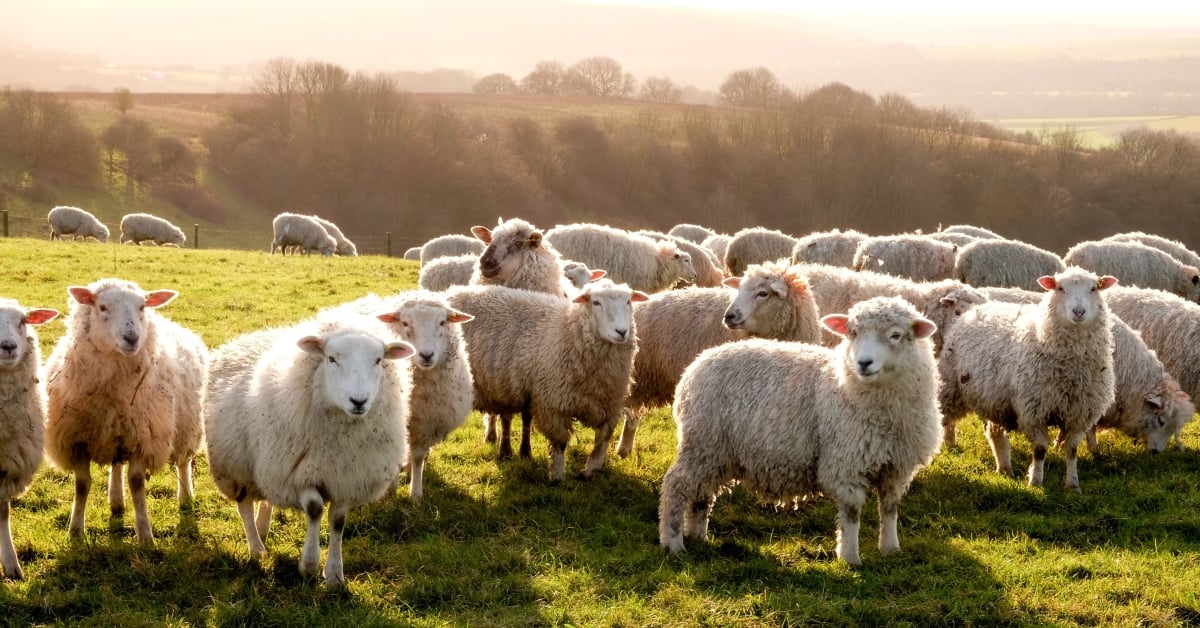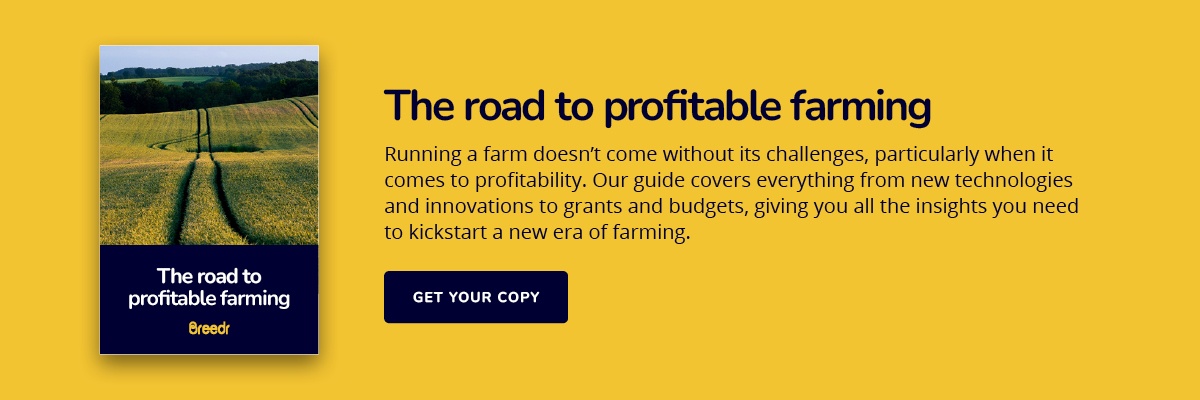Everything you need to know about the gestation period for sheep

For sheep farmers, you know the lambing season is one of the most critical dates in the calendar. To ensure a healthy flock and as many new lambs as possible, the gestation period’s success for sheep preceding this season is paramount.
To help you get to grips with everything you need to know about the gestation period for ewes, we’ve outlined all the vital information in this helpful blog. Keep reading to find out about:
How long are sheep pregnant?
On average, a ewe is pregnant for around 21 weeks. However, the gestation period can vary depending on the breed, nutritional levels, the age of the sheep, the number of foetuses and temperature conditions.
Tupping usually occurs in autumn, when melatonin levels increase, which is the main driver of seasonal breeding for sheep. The UK lambing season takes place around five months later, typically in the spring.
Sheep and pregnancy
Although sheep have been around for hundreds of years and ewes can support a pregnancy and give birth naturally, you should take several considerations into account to ensure the greatest lambing success for your flock.
To begin with, avoid breeding your sheep when they’re too young. This can result in stunted growth, smaller lambs and birth issues. 10-12 months is the ideal age for a sheep to begin breeding.
While there are many influential factors in the gestation period for a sheep, you should focus on three main areas — hormones, nutrition and disease. Let’s get into these in more detail.
Hormones
When considering hormones, the gestation period for a sheep is similar to a human pregnancy in that the levels of hormones fluctuate at different stages. The two main hormones present during sheep pregnancy are oestrogen and progesterone.
Oestrogen dominates during the fertile period, while progesterone is the main hormone that’s present and supports the gestation period.
However, another hormone plays a key part in the gestation period for sheep. Cortisol is a stress hormone that initiates the birth of a lamb, also known as parturition. This is why it’s important to monitor cortisol levels and minimise the likelihood of stressful events during sheep pregnancies, as too much cortisol could have a damaging effect on the sheep and the lambs.
Nutrition
Perhaps the most important consideration during sheep pregnancy is nutrition. Although a healthy diet is important all year round, it’s particularly crucial during gestation. It ensures ewes get the nutrients to support a pregnancy and provide a healthy lamb. A lack of nutrients can result in disease, birth defects, small birth weights and ultimately, the death of a ewe and/or lambs.
Feed requirements depend on the breed, the size of the ewe, the size of the litter and the ewe body condition score (BCS). The scanning of pregnant ewes should happen early on in the gestation period, as the nutrition levels required will depend on the number of foetuses.
Nutrition during the trimesters
During the first trimester, there’s minimal foetal growth. Therefore, sheep are likely to get most of their dietary requirements from the grass as autumn supplies are adequate.
Winter conditions will have begun by the time the second trimester comes around and the access to grass supplies may be limited. Additional dietary supplements and uptake in nutrients will be needed.
The last trimester is the most crucial in terms of nutrition, as this is when 75% of foetal growth occurs. Nutrition during this period will directly impact lamb birth weight and viability, colostrum supply, lambing difficulty, mothering ability and ewe mortality. A ewe’s appetite also decreases by 30% in the last trimester, so it’s even more important to ensure your sheep get the appropriate nutrients.
Nutrition supplies
During the last trimester — when nutrient levels are highly important — spring grass levels will provide many nutrients, so it’s essential to allow sheep access to grass-based feeding systems.
Supplementary feeding with silage, hay or straw may be needed to provide extra energy and protein, while concentrate feed quality should be assessed to ensure maximum nutrient intake.
Disease
Diseases are common amongst sheep, whether they’re pregnant or not. This is why you should vaccinate sheep to reduce the risk of diseases, typically during the last four weeks of gestation.
While many diseases can affect a ewe during gestation and birth, there are two common risks to look out for.
Ovine pregnancy toxaemia (twin lamb disease)
Ovine pregnancy toxaemia — more commonly known as twin lamb disease — is common among low ground flocks with ewes pregnant with twins or triplets, hence the name. Twin lamb disease occurs due to a lack of nutrients and feeding and therefore a severe energy shortage.
It can also happen after a stressful event from dogs, adverse weather conditions, handling or housing and a spike in cortisol levels.
Symptoms include a lack of energy, blindness, weight loss and the ewe is unable to eat or stand. This disease can result in a stillborn birth, death of a lamb after birth and/or the death of a ewe.
Hypocalcaemia (milk fever)
Also known as milk fever, hypocalcaemia is a calcium deficiency that usually occurs during the last six weeks of gestation into the first month of lactation. It can be caused by poor nutrition or the digestion of certain weeds.
A lack of calcium can affect muscles such as the lungs and heart, often resulting in the death of a ewe within 24 hours.
These conditions, along with many other diseases, can be avoided by vaccination, adequate nutrition, effective flock management and the regular assessment of ewe BCS.
To have a successful lambing season with the maximum number of new lambs, the care and nutrition of a ewe during the gestation period is critical, so monitor each sheep closely.
Want to find out more?
At Breedr, we come to work every day to ensure British farmers are efficient, productive and profitable. To find out more about popular topics and find the answers to common questions, head over to our profitability page by clicking the link below.





